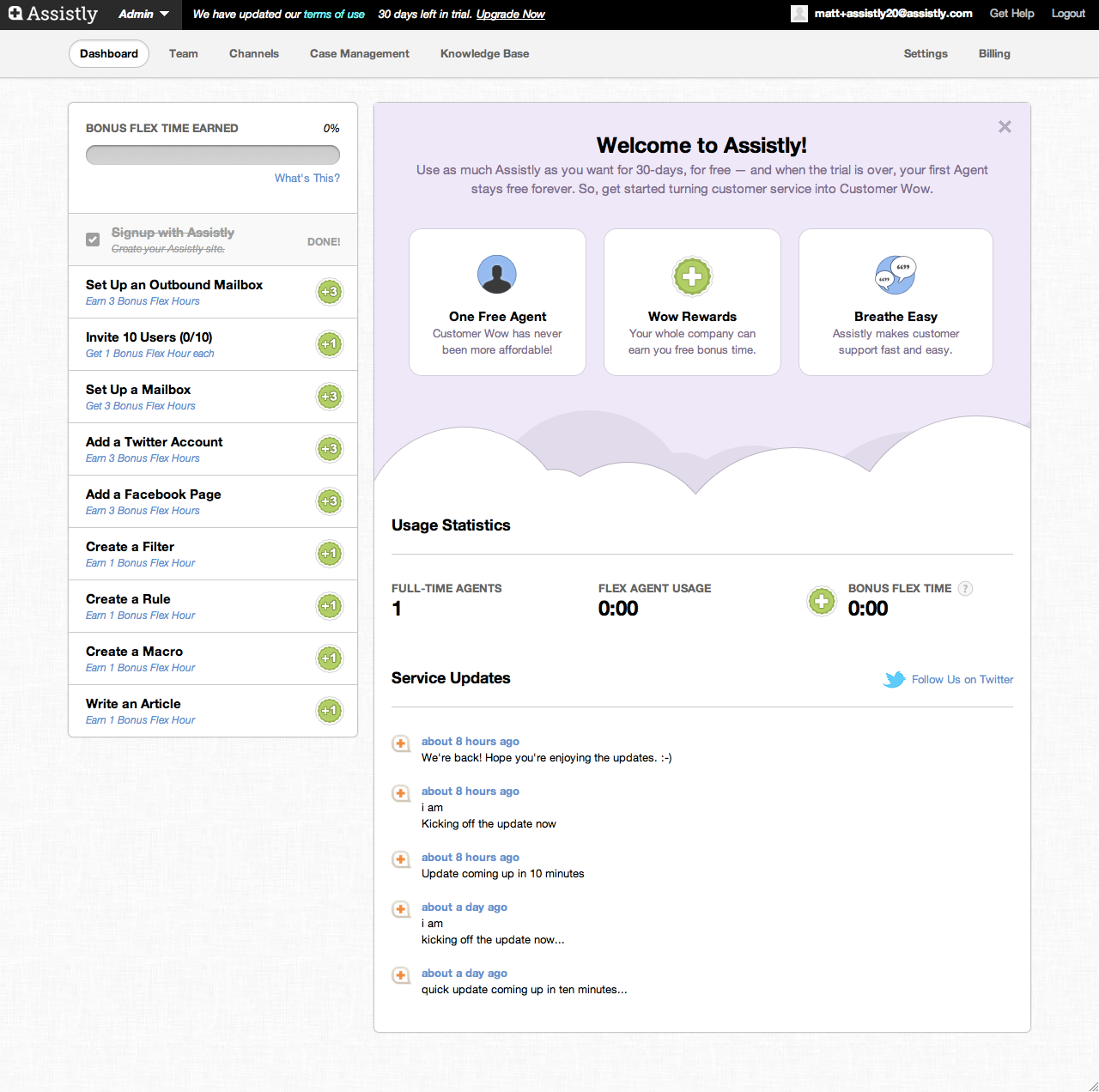Assistly, a cloud-based customer support platform, raised $3 million in funding in January of this year from Bullpen Capital, Index Ventures, Salesforce, as well as several other angels and VCs.
Since launching in September of last year and taking on new capital, Assistly has brought on companies like Yelp, Etsy, 37signals, Pandora, Vimeo, and Spotify as paying customers, attracting them with a customer support platform that allows businesses to respond to its customers beyond traditional customer service paths like email and phone calls by tapping into social media conversations on Facebook, Twitter, and other social networking sites. It also helps that the startup counts Mark Cuban and David Liu as advisors.
But beyond the ability to monitor customer chatter on a number of different channels, Assistly enables businesses to filter those conversations, organize them in prioritized, actionable lists, as well as achieve access to customer histories, automate all of these support processes, and view metrics and analysis.
Another big selling point for Assistly was its pricing model, which included a “Flex” pricing model, which allowed users to buy usage time for users who are not full-time agents (like execs, developers, marketing, etc.), with the ability to create additional Flex seats at no charge per seat.
However, since launch, like a good customer support startup, Assistly has been listening to its own customer feedback, and it thinks that it’s found an even more appealing pricing structure. After all, there’s no more appealing word than “free”.
Today, Assistly is rolling out a new pricing model that includes a full-featured version of its service for free — along with version 2.0 of its SaaS software. Assistly Co-founder and CEO Alex Bard told us that the original pricing model was “the familiar SaaS model you’ve seen hundreds of times”, it was three-tiered (standard, professional, and enterprise), with each tear adding more features, yet simultaneously getting more expensive on a per-seat basis.
The idea behind the updates is to get away from offering “a hobbled freemium model”. Customers told the startup that they wanted to start off with the service for free, and then grow inexpensively as they themselves grew. What’s more, customers don’t like tiered pricing structures; they want to buy what they need when they need it, not to be forced into an upgrade later. Simply put, they want a price system that’s simple, understandable, and transparent, and they want to be able to change their mind.
While it may sound like a lot to ask for, Assistly thinks that it’s come up with a good solution. The first full-time agent is free for every Assistly customer, and businesses can add as many “Flex Agents” as they want for free, paying only $1 an hour for actual usage, and it did away with tiered pricing altogether. Assistly added inexpensive “a la carte” upgrades that users can add or remove whenever they are so inspired.
The team also grandfathered in all of its existing customers, tweaking it in such a way as to give them the best mix of the old and the new. According to Bard, not a single customer’s price went up. It sounds like Netflix could take a page out of Assistly’s book.
In another unique twist, the startup has given its customers the ability to earn bonus flex hours as rewards (what it’s calling Assistly Wow Rewards), which they earn just by using the service. So, this means that actions a business might normally take earns them points and lowers the overall cost of running the service. For example, if a business connects its Twitter account with Assistly, it might receive 3 free hours of free support.
Beyond a new pricing setup and rewards, Assistly v2.0 offers a redesign of its on-boarding, admin, and reporting interfaces, which have gotten a more intuitive look and feel, as well as the additional support of workflows.
These are all great additions for a SaaS CRM platform, and have made Assistly one of the more easy-to-use and afford platforms out there. It’ll be interesting to see if customers react in kind.
For more on the new pricing structure, click here.

